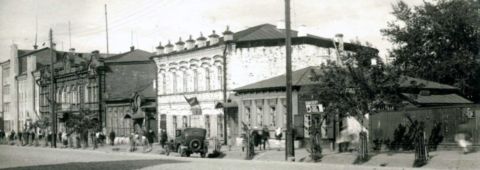Students of the SUSU Department of Linguistics and Translation conducted a research on the image of the city of Chelyabinsk at the turn of the 19th–20th centuries using a corpus of local historical texts.
The research was conducted within the framework of a state order from the Ministry of Education and Science of the Russian Federation on the topic of “Examining the Region in the Context of Global Historical Connections Using Methods of Digital Humanities”.
A team of linguists created a digital resource, a unique product of its kind, that includes conceptually marked non-fiction texts. The corpus consists of notes and various publications by city residents, as well as guest travellers. The created resource helps to select articles by date, source name, author, and topic. Currently, the materials describe events at the turn of the 19th and 20th centuries.
“After the construction of the Trans-Siberian Railway, Chelyabinsk became the “gateway” to Siberia, rich in natural resources. The population of the city then doubled and the impetus for development appeared. Chelyabinsk was even called a “Trans-Ural Chicago”,” explains the head of the study, Associate Professor Elizaveta Orekhova. “One of the students’ tasks was to prove whether that image corresponded to reality.”
During the study, linguists found texts with a negative gist. For example, Wilhelm Harteveld, a Russian musicologist, noted: “There are several very suspicious hotel rooms for visitors near the railway station, where, they say, you can find not only temporary, but also eternal peace”. The same text could contain both criticism and approval. “This is a superb large theatre building made of stone and iron, standing on the outskirts of the city” Harteveld wrote about the today's Youth Theatre back in 1912. Many materials portrayed Chelyabinsk as a developing city: “New, fast-growing”; “The city undoubtedly has a great future”; “Chelyabinsk is called the city of the future”. Students found that most of the texts had a positive connotation.
“Some texts consisted of hundreds of pages, which complicated the process of creating an image of the city. It was necessary to fully study the text, analyse it, and structure the obtained data,” Alina Kutina, a participant to the study, shared the difficulties she encountered.
Despite these problems, the students approached their work with interest. For themselves, they singled out the memoirs of Vladislav Zagorsky, a Polish doctor, who described the appearance of Chelyabinsk and life in it in a unique style: “The gardens gave the city a cheerful look”; “Housing there was fabulously cheap”; “The city is clean, with wide and clean streets.” Zagorsky called the Ural citizens “Amazingly sturdy.”
The digital resource – a corpus of historical local texts – is ready for work. Potentially, the range of materials can be expanded. The resource is applicable for work in linguistic, cultural, and historical fields.




